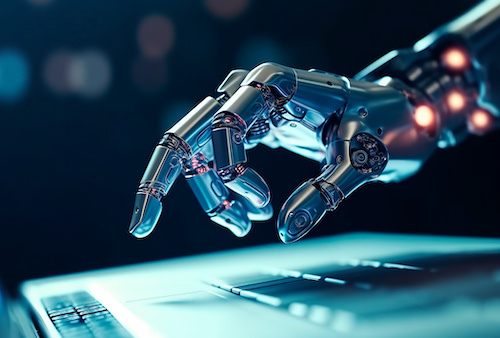Key points:
- Education systems that fail to adapt to our new AI reality risk becoming obsolete
- AI has a role in learning—but we must implement it in the correct way
- See related article: OpenAI releases ChatGPT teaching guide
- For more on AI in learning, visit eSN’s Digital Learning page
- Everything You Need To Know About AI In Education
The education landscape is undergoing a tectonic shift propelled by rapid technological advancements. From the introduction of calculators in the 1970s to the ubiquity of ChatGPT-4 AI in academic settings, the transformation is profound and irreversible.
As Andy Nguyen, a leading expert in artificial intelligence in education, aptly puts it: We are at an inflection point where technology is not just an adjunct to education; it’s becoming the backbone. This article delves into the evolution of educational technology and the challenges and opportunities presented by AI and offers a clarion call for educational systems to adapt swiftly.
The evolution and current reality
The journey from manual calculations to calculators was a gradual but significant one. It began in the 1970s and gained momentum in the late 1980s, with organizations like the National Council of Teachers of Mathematics advocating for technology integration. Fast forward to today, and we have GPT-4, a sophisticated AI model used by more than a million students worldwide. As Dr. Robert Lee, a researcher in AI and education, believes, the leap from calculators to AI is not incremental; it’s exponential.
Students across academic disciplines are already harnessing the capabilities of GPT-4. As the author of this article and a continuing student in the educational field, ChatGPT-4 has been invaluable in my Ph.D. courses. It’s not just a tool; it’s like having a personal tutor.
However, I must also note that some courses have become ‘too easy,’ highlighting the transformative impact of AI on academic rigor. Stefania Giannini, Assistant Director-General for Education, UNESCO, echoes this sentiment, emphasizing that the rapid adoption of AI in education is outpacing the ability of our educational system to adapt.
A call to action
Dr. Johnson, a leading AI researcher, sums it up: The question is not whether we should integrate AI into education but how we can do it ethically and equitably, enhancing the educational experience for all students. Given the urgency, educational institutions must be bold. Immediate actions are imperative:
- Rapid policy development: Task forces comprising educators, administrators, and tech experts should be formed to draft guidelines and policies urgently.
- Ethical guidelines: Academic integrity and data privacy standards must be established post-haste.
- Curriculum adaptation: The curriculum must be adapted to offer more advanced material or focus on skills AI cannot replicate.
- Ongoing evaluation: Policies should be revisited and revised regularly to keep pace with technological advancements.
Reflections
The GPT-4 genie is out of the bottle, and there’s no turning back. Bryan Alexander, an internationally known futurist and teacher, recommends that educational systems wake up and get ahead of the curve. The future is not on the horizon; it’s already here. Educational systems that fail to adapt to this new reality risk becoming obsolete. The shift from calculators to AI is not merely a technological upgrade; it’s a paradigm shift that requires a complete rethinking of how we approach education. The time for action is not in the future; it’s now. Therefore, educational systems must adapt swiftly and responsibly to this transformative change, ensuring an ethical and equitable educational experience for all.
- 4 ways to encourage play in education - April 25, 2024
- CoSN IT Leader Spotlight: Lisa Higgins - April 25, 2024
- It’s time to pay student teachers - April 25, 2024

